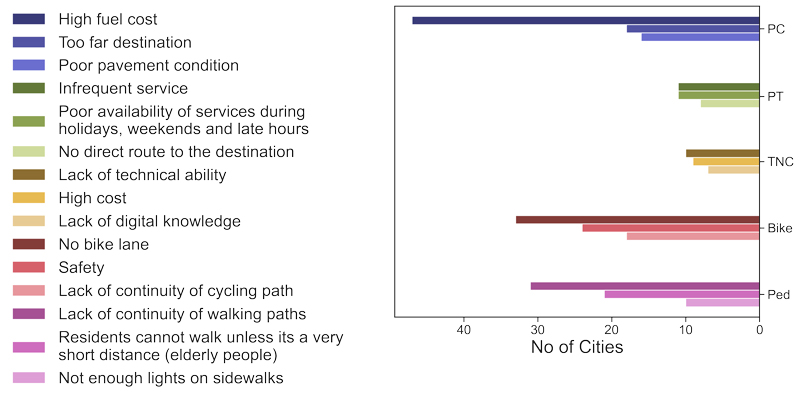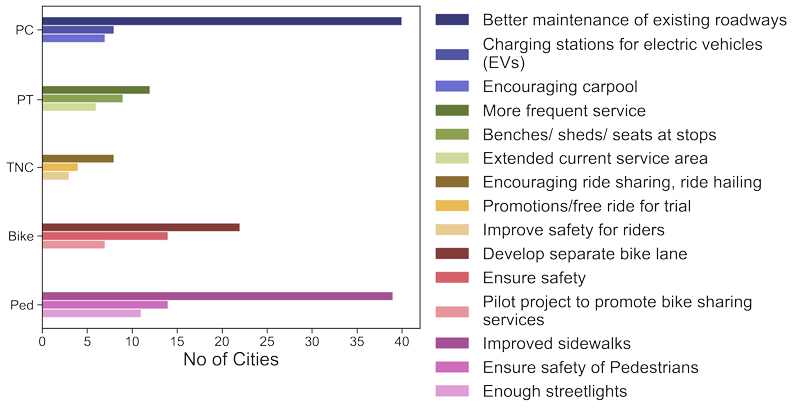Survey
We conducted a survey on cities with a declining population in Illinois. Asking questions about the availability of travel modes, the challenges faced by users of each mode, commonly/possible implemented solutions to facilitate mobility, and investment and funding in transport, our study provides an analysis of transportation conditions in cities with a declining population. We also provide a descriptive analysis of the survey responses and analyze how responses vary with city size and location.
Our study highlights the importance of evaluating existing conditions to implement tailored solutions to local contexts instead of applying blanket solutions that often fail to benefit the residents.
The main survey findings include:
- Access to funds is vital, especially for small cities. To cope with funding shortages, city officials resurface their roadways instead of repaving them, posing safety challenges as well as drainage issues.
- Lack of well-maintained roads can act as a deterrence to attracting more employment opportunities.
- Cities with a very small population cannot promote PT because of the low demand.
- TNC-demand changes depending on city size and location.
- In some cases, PT services are provided, but residents are not aware of them.
- Survey respondents also underscored the need for improved sidewalks to make places more accessible for people without a car.
- City officials stressed the necessity of having low-cost transport services for their aging communities to access health care and shopping facilities.
- City officials highlighted the need of special transport services for specific communities and promoting local business.
The two figures below show the top 3 challenges and top 3 solutions identified by the survey respondents.
Find more information in our two-page flyer or by reading a our publication. The study includes a full list of the survey questions.
Top 3 Challenges

PC: Passenger Car; PT: Public Transit; TNC: Transport Network Companies; Bike: Bicycle; Ped: Pedestrians
Top 3 Solutions

PC: Passenger Car; PT: Public Transit; TNC: Transport Network Companies; Bike: Bicycle; Ped: Pedestrians


